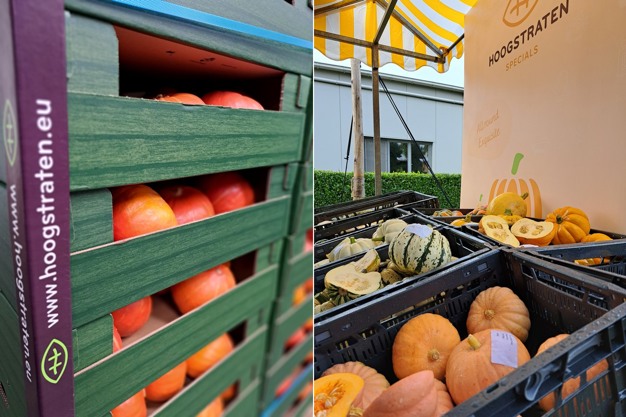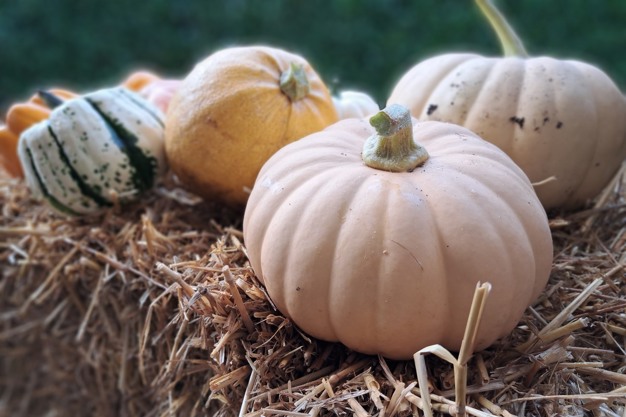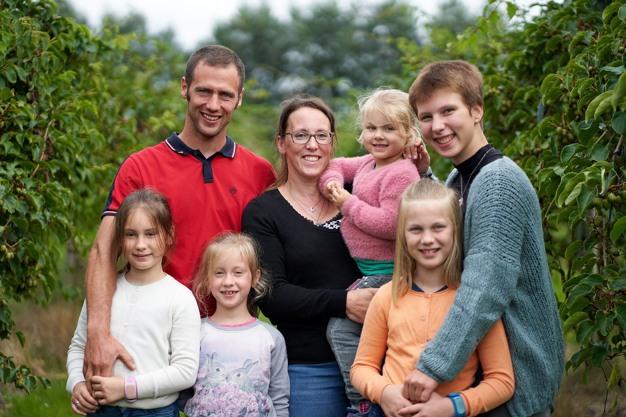Jeroen de Ridder, a Coöperatie Hoogstraten affiliated grower, has a rich pumpkin farming history, beginning when, as an eight-year-old, he was already cultivating nearly 100 kinds of pumpkins. Today, Jeroen grows about 15 varieties on an impressive 70-hectare acreage in Belgium.

Hokkaido is his mainstay, at just over 40 hectares. Jeroen cultivates butternut squash on half the remaining area. And, on about a hectare each, various smaller crops like spaghetti squashes, Kabocha, gray pumpkins, three varieties of 'microwave pumpkins' (small fruits with diameters of up to 10 cm that can be prepared perfectly in the microwave), and Turban squashes. Though decorative, these pumpkins are entirely edible.
Jeroen harvests an average of 25 to 30 tons of butternut squash per hectare; 20-25 tons of Hokkaido, and of the green Kabocha and gray pumpkins, around 20 tons. "Considering the saleable kilos, post-storage, Kabocha and gray pumpkin outperform Hokkaido. Other than that, they all weigh, at most, 2 kg. That's ideal for today's household size," says de Ridder.

He points out how versatile pumpkins are in cooking, going beyond the traditional soup. Jeroen also sees opportunities in promoting lesser-known varieties such as the green and gray pumpkins, which taste better. And despite competition from imports, mainly from the Netherlands and South Africa, demand for locally-grown pumpkins keeps rising.
That is partly thanks to Belgian retailers and consumers increasingly preferring local produce. Jeroen is optimistic about chances to expand his acreage, especially for butternut squash, where demand exceeds local supply. He stresses the importance of long-term client collaborations for sales security and stable prices regardless of market fluctuations.
Room for more local produce
Regular buyers' needs primarily determine how the pumpkin specialist divides his acreage. "If there's a large Hokkaido yield, there's plenty of pressure on the Belgian market from the Netherlands and some other growing countries. As for butternut squash, we could easily add 20 hectares. We're usually out by the third week of January, but we could actually continue. Retail demand for local produce rises annually, especially if our price is close to the South African imports, which appear on the European market in February."
 De Ridder family
De Ridder family
Also, when the German market empties, demand for Belgian pumpkins increases. "Prices can sometimes rise by €0.20 in a single week. But I prefer fixed agreements with sales here in Belgium. Good, long-term customer partnerships offer the advantage of sales and price stability. You cannot benefit from the positive outliers in prices, but you don't suffer deep troughs, either," Jeroen concludes.
Coöperatie Hoogstraten
Loenhoutseweg 59
2320 Hoogstraten, België
Tel.: +32 33 40 02 11
[email protected]
www.hoogstraten.eu
